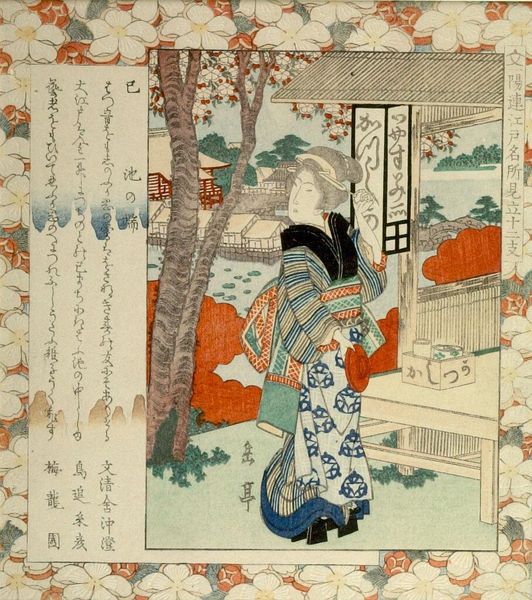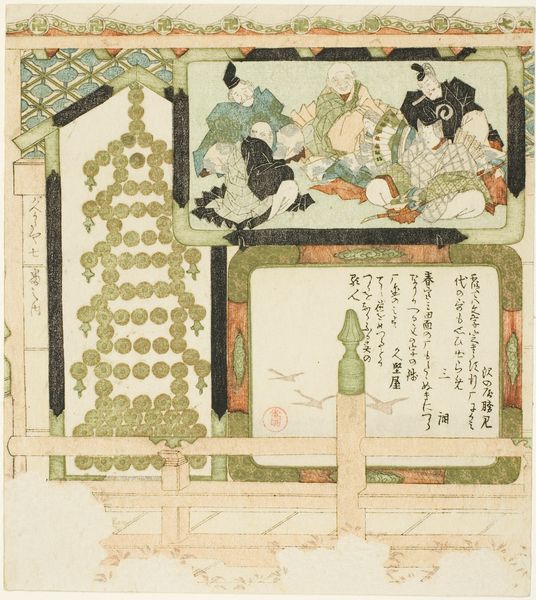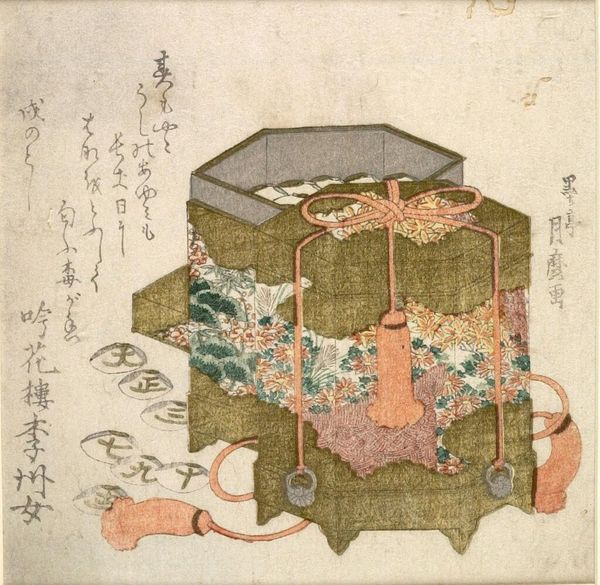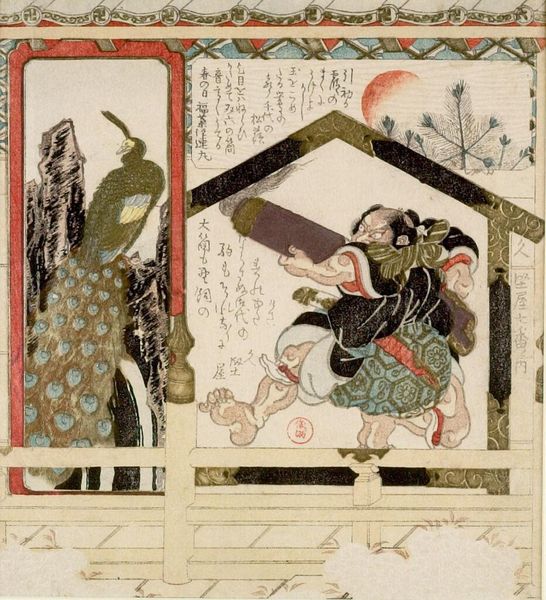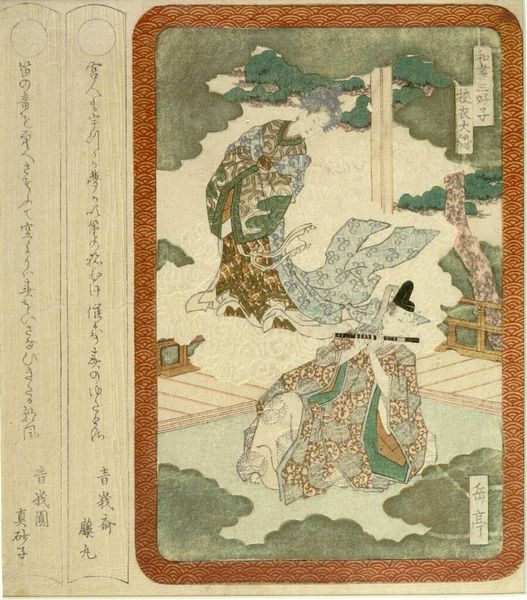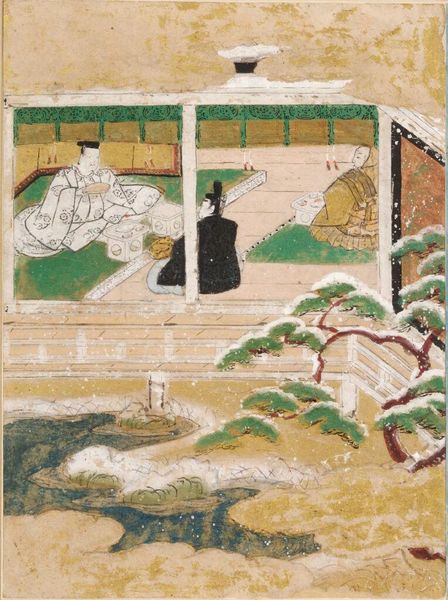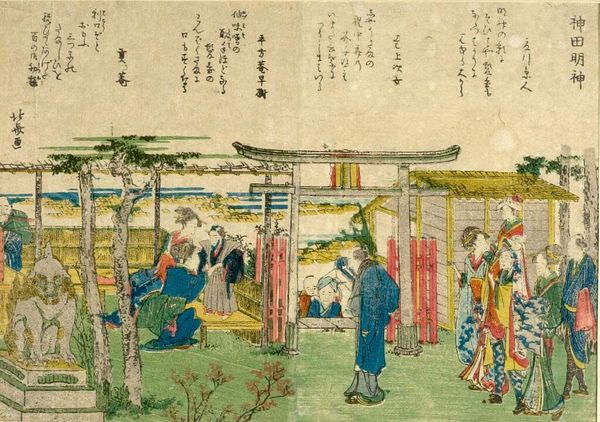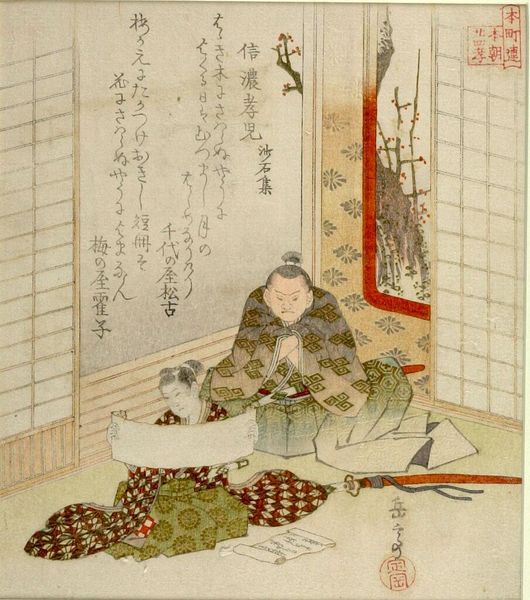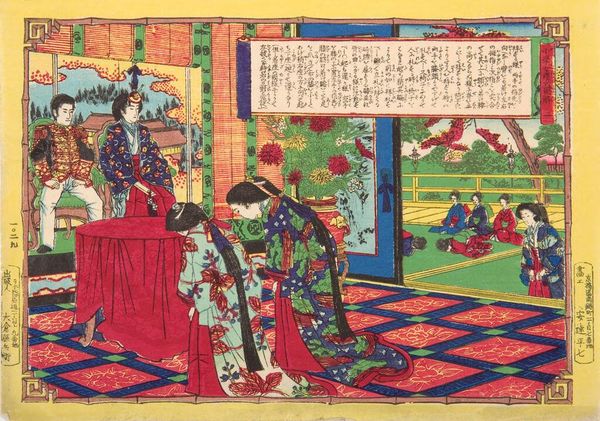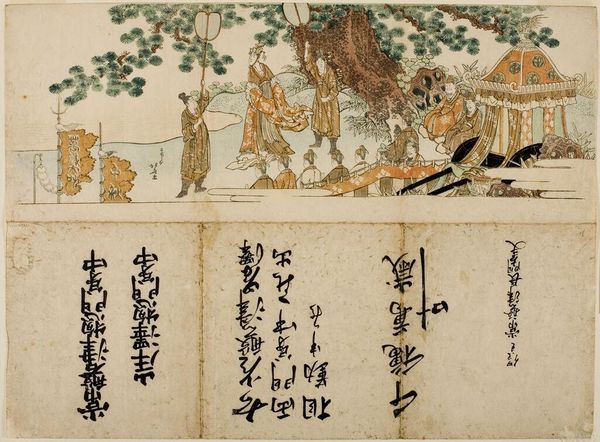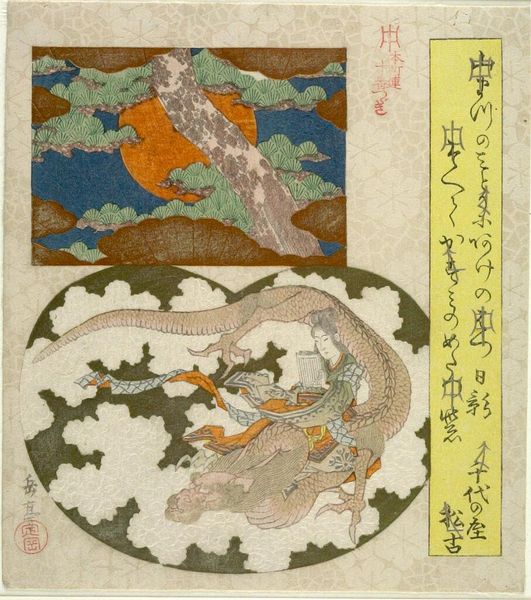
Votive Paintings (EmadÅ) of Camellias and Court Lady and Monk at Kiyomizu-dera, from the series of Seven for the Hisakataya Club (Hisakataya shichiban no uchi), with various poems c. 1814 - 1819
0:00
0:00
Dimensions: Paper: H. 20.4 cm x W. 18.3 cm (8 1/16 x 7 3/16 in.)
Copyright: CC0 1.0
Editor: This is Kubo Shunman's woodblock print, "Votive Paintings of Camellias and Court Lady and Monk at Kiyomizu-dera." I'm struck by the contrast between the vivid camellias and the solemn scene of the lady and monk. What symbolic meanings might be embedded here? Curator: The camellia, often seen in temple gardens, symbolizes both beauty and a fragile, transient life, given their tendency to drop their blossoms whole. Consider the poem above, possibly hinting at ephemeral moments. Editor: That’s interesting, how does this interplay with the depiction of the monk and court lady? Curator: Note their placement near Kiyomizu-dera, a temple known for its association with compassion. The monk, a figure of renunciation, juxtaposed with the court lady, a symbol of earthly beauty, invites reflection on worldly attachments. What do you observe? Editor: I see a potential dialogue between desire and detachment, framed by the fleeting beauty of the camellias. Curator: Precisely. Shunman uses familiar symbols to tap into universal human experiences of longing and impermanence. Editor: I learned how symbols can be intertwined to convey complex emotions and philosophical questions, beyond the surface-level images. Curator: And that these symbols echo throughout time.
Comments
No comments
Be the first to comment and join the conversation on the ultimate creative platform.
